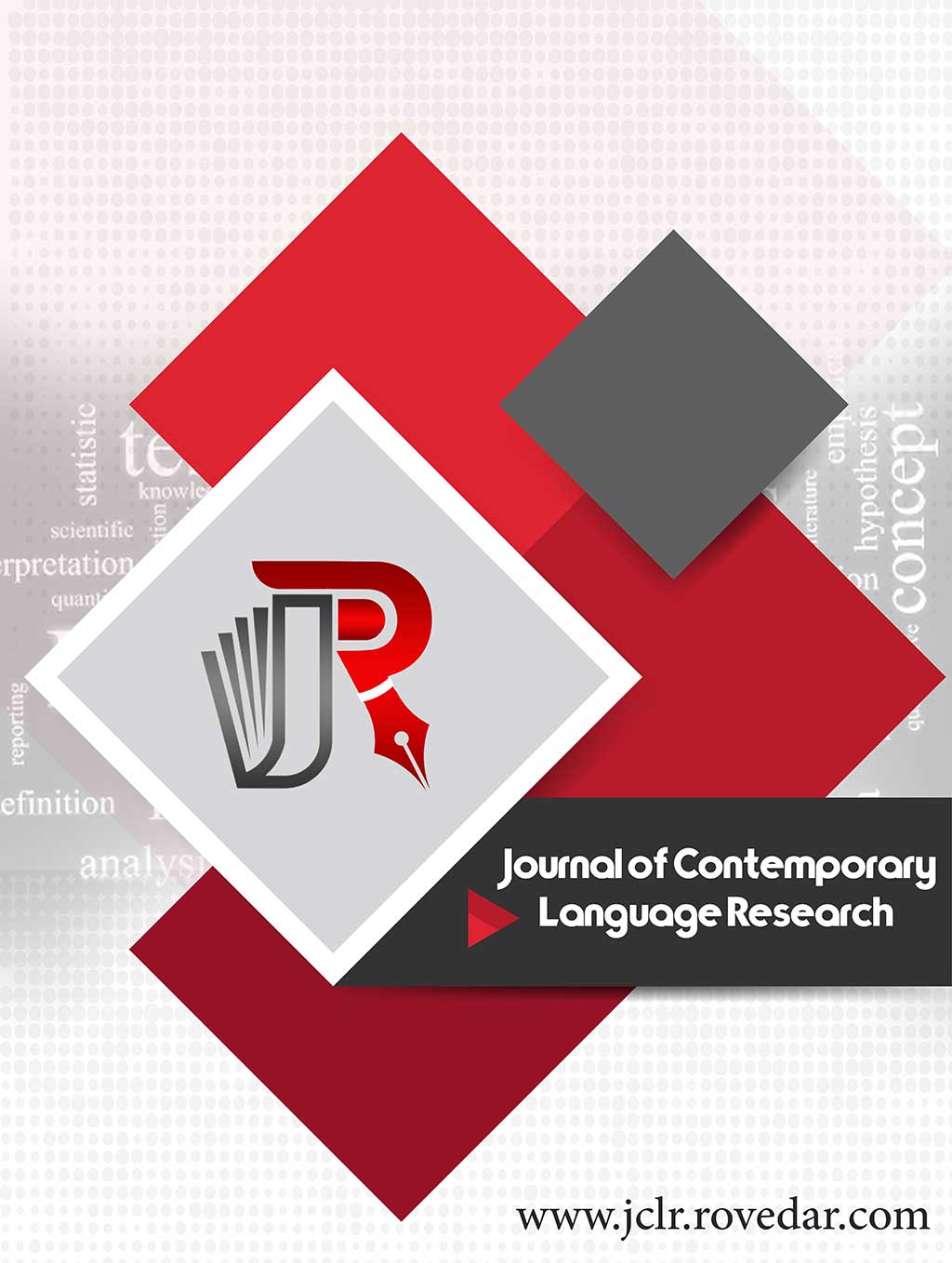The Third Person Pronoun and Demonstrative Resolution in Mandarin Chinese and Discourse Prominence
Main Article Content
Abstract
Introduction: The third person pronoun and demonstrative resolution are influenced by multiple factors in Mandarin Chinese. The factors influencing reference choice and the relations between discourse prominence and pronoun resolution are discussed. It suggests discourse prominence is an essential organizational principle in reference resolution. The factors that influence pronoun resolution in Mandarin Chinese might be studied and explained from the perspective of discourse prominence.
Methodology: A formal operational scheme with conditional inference recursive partitioning tree and random forest analysis analyzing discourse data collected from a picture-sequence-based narrative elicitation method is provided.
Results: The results confirmed the idea that the discourse prominence-lending cues, including thematic role, animacy, grammatic role, topic, referential distance, and mentioned number, influence pronoun resolution in Mandarin Chinese. Animacy and reference distance might be involved in the important variances, and reference distance relates to topic maintenance, discourse dynamicity, and structural attracting.
Conclusion: The findings demonstrated that the discourse prominence-lending cues influence pronoun resolution in Mandarin Chinese. The third person pronouns often signal topic maintenance and high discourse prominence, while demonstratives often signal topic shift and low discourse prominence. Moreover, demonstratives often signal focus reinforcement. Therefore, topic and focus are also considered as the two crucial elements affecting pronoun resolution in Mandarin Chinese.
Article Details

This work is licensed under a Creative Commons Attribution 4.0 International License.
References
Arnold, J. E. (2001). The effect of thematic roles on pronoun use and frequency of reference continuation. Discourse Processes, 31(2), 137-162. https://doi.org/10.1207/S15326950DP3102_02
Chafe, W. L. (1980). The Pear stories: Cognitive, cultural, and linguistic aspects of narrative production. Ablex, Norwood, NJ. https://philpapers.org/rec/CHATPS
Chambers, C. G., & Smyth, R. (1998). Structural parallelism and discourse coherence: A test of centering theory. Journal of Memory and Language, 39(4), 593-608. https://doi.org/10.1006/jmla.1998.2575
Chen, Ping. (1986). Referent introducing and tracking in Chinese narratives. Ph.D. Dissertation, The University of California. https://linguistics.ucla.edu/images/stories/Chen.1986.pdf
Colonna, S., Schimke, S., & Hemforth, B. (2012). Information structure effects on anaphora resolution in German and French: A crosslinguistic study of pronoun resolution. Linguistics, 50(5), 991-1013. https://doi.org/10.1515/ling-2012-0031
Comrie, B. (1997, January). Pragmatic binding: Demonstratives as anaphors in Dutch [Paper presentation]. The 23rd Annual Meeting of the Berkeley Linguistics Society, General Session and Parasession on Pragmatics and Grammatical Structure, Berkeley, CA, USA. pp. 50-61. https://doi.org/10.3765/bls.v23i1.1281
Dahl, O., & Fraurud, K. (1996). Animacy in grammar and discourse. In T. Fretheim & Gundel, J. K (Eds.), Reference and referent accessibility (pp. 47-64). Benjamins. https://doi.org/10.1075/pbns.38.04dah
Diessel, H. (2019). Deixis and demonstratives. In C. Maienborn, K. von Heusinger, & P. Portner, (Eds.), Semantics - interfaces (pp. 463-493). De Gruyter Mouton, Berlin, Boston. https://holgerdiessel.uni jena.de/Deixis%20and%20demonstratives.pdf
Gernsbacher, M. A., Varner, K. R., & Faust, M. E. (1990). Investigating differences in general comprehension skill. Journal of Experimental Psychology: Learning, Memory, and Cognition, 16(3), 430-445. https://psycnet.apa.org/doi/10.1037/0278-7393.16.3.430
Givón, T. (1983). Topic continuity in discourse: A quantitative cross-language study. John Benjamins Publishing Company. https://doi.org/10.1075/tsl.3
Gordon, P. C., Grosz, B. J., & Gilliom, L. A. (1993). Pronouns, names and the centering of attention in discourse. Cognitive Science, 17, 311-347. https://doi.org/10.1207/s15516709cog1703_1
Gundel, J. K., Hedberg, N., & Zacharski, R. (1993). Cognitive status and the form of referring expressions in discourse. Language, 69(2), 274-307. https://doi.org/10.2307/416535
Himmelmann, N. P., & Primus, B. (2015). Prominence beyond prosody is a first approximation. In A. De Dominicis (Ed.), Ps-prominences: Prominences in linguistics (pp. 38-58). Proceedings of the International Conference, Disucom Press. http://kups.ub.uni-koeln.de/id/eprint/24935
Hint, H., Nahkola, T., & Pajusalu, R. (2020). Pronouns as referential devices in Estonian, Finnish, and Russian. Journal of Pragmatics, 155, 43-63. https://doi.org/10.1016/j.pragma.2019.10.002
Hobbs, J. R. (1979). Coherence and coreference. Cognitive science, 3(1), 67-90. https://doi.org/10.1207/s15516709cog0301_4
Hothorn, T., Hornik, K., & Zeileis, A. (2006). Unbiased recursive partitioning: A conditional inference framework. Journal of Computational and Graphical Statistics, 15(3), 651-674. https://doi.org/10.1198/106186006X133933
Kaiser, E. (2013). Looking beyond personal pronouns and beyond English: Typological and computational complexity in reference resolution. Theoretical Linguistics, 39(1-2), 109-122. https://doi.org/10.1515/tl-2013-0007
Kaiser, E., & Trueswell, J. C. (2008). Interpreting pronouns and demonstratives in Finnish: Evidence for a form-specific approach to reference resolution. Language Cognition Process, 23(5), 709-748. https://doi.org/10.1080/01690960701771220
Kibrik, A. A. (1996). Anaphora in Russian narrative prose: A cognitive calculative account. In B. Fox (Ed.), Studies in Anaphora. John Benjamins Publishing Company.
Schumacher, P. B., Backhaus, J., & Dangl, M. (2015). Backward and forward-looking potential of anaphors. Frontier of Psychology, 6, 17-46. https://doi.org/10.3389/fpsyg.2015.01746
Schumacher, P. B., Dangl, M., & Uzun, E. (2016). Thematic role as prominence cue during pronoun resolution in German. In A. Holler & K. Suckow (Eds.), Empirical perspectives on anaphora resolution (pp. 121-47). de Gruyter. https://doi.org/10.1515/9783110464108
Stevenson, R. J., Crawley, R. A., & Kleinman, D. (1994). Thematic roles, focus and the representation of events. Language and cognitive processes, 9(4), 519-548. https://doi.org/10.1080/01690969408402130
Strobl, C., Malley, J., & Tutz, G. (2009). An introduction to recursive partitioning: Rationale, application, and characteristics of classification and regression trees, bagging, and random forests. Psychological Methods, 14(4), 323-348. https://psycnet.apa.org/doi/10.1037/a0016973
Wang, Li. (1989). The history of Chinese. The Commercial Press.

